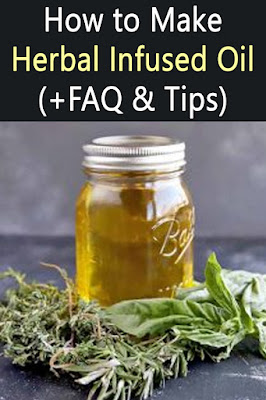Herbal infused oils are versatile and beneficial, often used in cooking, skincare, and therapeutic practices. Making your own herbal infused oil at home is simple and rewarding. Here’s a step-by-step guide, along with some frequently asked questions and tips to ensure the best results.
Ingredients and Supplies
- Fresh or dried herbs of your choice (e.g., lavender, rosemary, chamomile, basil)
- Carrier oil (e.g., olive oil, coconut oil, almond oil, jojoba oil)
- Glass jar with a tight-fitting lid
- Cheesecloth or fine mesh strainer
- Dark glass bottle for storage
Step-by-Step Instructions
1. Choose Your Herbs:
- Select fresh or dried herbs depending on your preference and availability. Fresh herbs can add a more vibrant aroma, while dried herbs have a longer shelf life and are less likely to spoil.
2. Prepare the Herbs:
- If using fresh herbs, rinse them thoroughly and let them air dry completely. Any moisture can cause the oil to spoil.
- Lightly crush or chop the herbs to release their essential oils.
3. Fill the Jar:
- Place the prepared herbs in the glass jar, filling it about halfway.
4. Add the Carrier Oil:
- Pour the carrier oil over the herbs, ensuring they are completely submerged. Leave some space at the top of the jar to allow for expansion.
5. Infusion Methods:
A. Solar Infusion Method:
- Seal the jar tightly and place it in a sunny spot for 2-6 weeks. Shake the jar gently every few days to help with the infusion process.
B. Quick Heat Infusion Method:
- Place the sealed jar in a pot of warm water (about 100°F/38°C) and let it sit for 1-2 hours. Make sure the water level is below the lid to prevent water from getting into the oil.
6. Strain the Oil:
- After the infusion period, strain the oil using cheesecloth or a fine mesh strainer to remove the herbs. Squeeze out as much oil as possible from the herbs.
7. Store the Infused Oil:
- Transfer the strained oil into a dark glass bottle to protect it from light, which can degrade the oil. Store it in a cool, dark place.
FAQ
Q: How long does herbal infused oil last?
- Properly stored infused oils can last up to one year. Using dried herbs and ensuring no moisture gets into the oil will extend its shelf life.
Q: Can I use any oil for infusion?
- Yes, you can use any carrier oil that you prefer. Each oil has its unique properties, so choose one that suits your intended use.
Q: What herbs are best for infused oils?
- Popular herbs include lavender for relaxation, rosemary for its invigorating scent, chamomile for calming effects, and basil for its aromatic qualities.
Q: Can I use essential oils instead of fresh or dried herbs?
- Essential oils are highly concentrated and should be diluted before use. Infused oils provide a gentler, more subtle alternative.
Tips
1. Quality Matters: Use high-quality, organic herbs and oils for the best results.
2. Sterilize Jars: Always sterilize your jars and equipment to prevent contamination and spoilage.
3. Label Your Oils: Keep track of the infusion date and the herbs used by labeling your bottles.
4. Experiment: Don’t be afraid to mix different herbs and oils to create unique blends tailored to your needs.
Conclusion
Making herbal infused oil at home is a straightforward process that allows you to customize the blend to your preferences and needs. Whether for culinary use, skincare, or therapeutic purposes, these infused oils can enhance your daily routine with their natural benefits. Enjoy the process of creating your personalized herbal oils and the myriad of uses they offer.

